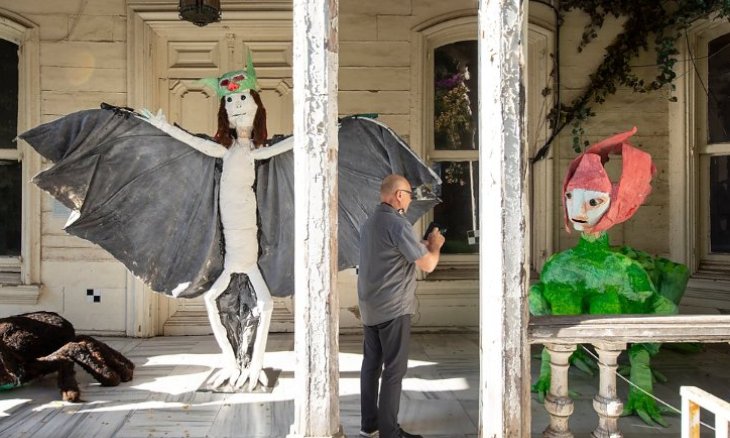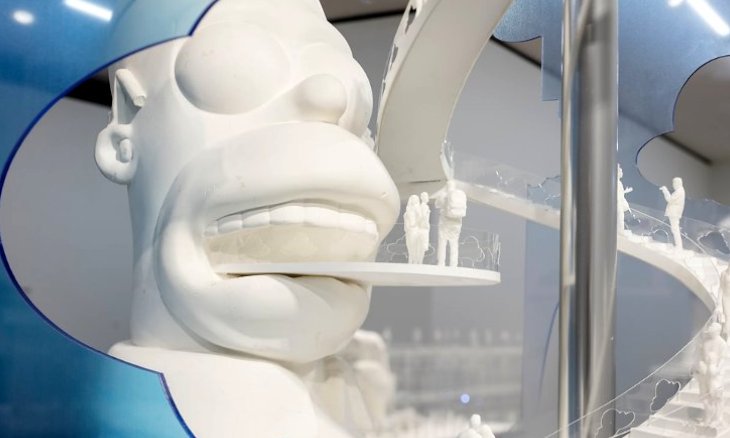16th Istanbul Biennial in 10 steps
Here is a guide to the 16th Istanbul Biennial, titled 'The Seventh Continent,' before and while visiting the venues. The exhibition is open until November 10 and is free of charge. How to approach certain topics as well as several tactics are here for you…
Kültigin Kağan Akbulut
'Us' and 'them' are merely imaginary notions, the products of this or that ideology.
The 16th Istanbul Biennial has opened with the title "The Seventh Continent." The biennial curated by Nicolas Bourriaud can be visited free of charge until November 10. Several articles and interviews have appeared about the biennial in the Turkish press. Well, what about what to watch for before or while stepping into the biennial? Which issues should we focus on? I have compiled 10 steps about the topics to take care about at the 16th Istanbul Biennial.
1.Climate is more contemporary than ever before
The climate change has been in our agenda for a long time. However, it has turned into an exceedingly current debate more than ever before in the past couple of years. When the theme of the biennial was announced as “The Seventh Continent” at the end of 2018, it did not create "too much" of an enthusiasm. However, in the not too distant past, the Covering Climate Now campaign was held, and nowadays activist Greta Thunberg's works immediately become hot points for discussion. We cannot place the biennial directly into the current climate debates, but we can take a look at the reflections of climate, of geography and of anthropology in history and look into its projections into the future.
2.Anthropocene
The Seventh Continent that makes the framework of the biennial was discussed from the point of garbage dumps, but we should think outside of this into the way the biennial covers it. Let us look into the biennial catalogue for definition of "Anthropocene”: "Anthropocene, or the era of the human being, is a term popularized by the work of meteorologist Paul Joseph Crutzen toward the end of the 20th century, that relates to the chronology of geology. Proposed to characterize a new era in Earth's history that which immediately followed in the wake of the Holocene, it designates a moment when the influence of mankind on the biosphere has become a major 'geological' force, wreaking a drastic effect on Earth."
Thus, the way the biennial approaches the Seventh Continent, is about the human history's effects on the Earth rather than the current climate crisis. Bourriaud approaches the Seventh Continent from a philosophical framework.
3.Anthropology
For this reason, one of the themes that you will come across frequently is anthropology. Bourriaud, in the catalogue text refers to British Tim Ingold's statement, "Anthropology is philosophy with the people in."In order to apprehend the seventh continent, we need the antenna of artists (its translators and anthropologists). What is discussed here is not yesterday's anthropology - based on an unquestionably Western notion of 'progress' and on the opposition between the 'civilized' and the 'primitive' - but rather a post-ethnicist (even a post-human) vision, which explores a territory where all subjects coexist and co-work."

4.Artists
As in any huge scale exhibition, in this biennial, works of all artists do not have a direct relation with the theme. They do not have to anyway, but the approach of the curator while putting all these artists together must be taken into consideration. The curator tells this in his catalogue piece:
“As an exhibition, 'The Seventh Continent' is neither a manifest for ecological art nor a comparison between the practices of artists and anthropologists: It is a gigantic hologram, an alternative globe map, gathering artistic practices that vary greatly in their forms and ambitions. Here, artists who, in one way or another, stretch the field of knowledge are brought together. They extend anthropology towards non-human worlds, dissect hybrid beings, make use of archeological methods to dig up imaginary civilizations or invent new topics of research."

5.Capital, Human, Environment
Alongside with the philosophical attitude of the curator, we also see works that feature current environmental issues. Several works feature such themes as garbage piles, the third bridge, polluting factories and field analyses. However, the criticism directed to the biennial as being "apolitical" coming especially from the international press, is probably based on this. We have a biennial where the capital and the capital owners are not directly pointed out.
6.Body
As well as anthropology and the climate, the body is another prominent topic in the biennial. We see works focusing on the place women's body occupies in history.
7.Venues
The biennial is in three main venues. The Istanbul Painting and Sculpture Museum is where the most works are showcased. In the Pera Museum, there is a series of works that have a dialogue with the museum's permanent collection. In the Büyükada Island, where I have not been able to go yet, there are works unique to the buildings used.
7.How to go around the Painting and Sculpture Museum?
It is a complicated matter for the visitor to go around the Painting and Sculpture Museum where the highest number of works are exhibited. The works are spread room by room in dim light and there are no connections to the open courtyard, which makes it difficult for the visitor to go around. At the entrance of the venue, there is a warning sign for the visitor to follow the numbers. In the first floors, there are works that need more concentration and require the reading of texts. When you are exhausted and climb up to the top floors, you are relieved. For this reason, it is not a clever idea to take the elevator to the top floor and go down from there.

9. The Effect of Bourriaud
Bourriaud is not only a curator who makes exhibitions, he is a curator who builds his own theory. His approach to the Seventh Continent is unique, but we do not see an exhibition where the curator's voice is dominant. The formation we face is one where artists' own voices can be heard, they are not suppressed.
10.Galataport
Let's look at the biggest work that we encounter at the biennial. When you walk up the floors of the Painting and Sculpture Museum, the Galataport construction pops up showing the effect on our daily lives the topics that the biennial covers. The Galataport project becomes a huge "land art" that encircles the 16th Istanbul Biennial.
